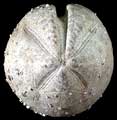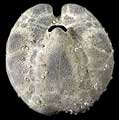The Echinoid Directory
Tripylaster Mortensen 1907, p. 122
| Diagnostic Features |
|
|---|---|
| Distribution | Recent, southern South America. |
| Name gender | masculine |
| Type | Tripylus philippii Gray, 1851, p. 132, by original designation. |
| Species Included |
|
| Classification and/or Status |
|
| Remarks |
|




